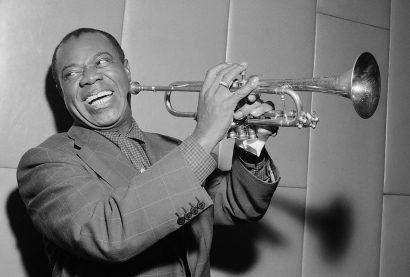Louis Armstrong — also known as "Satchmo", "Satch", "Pops", and "Louie" — was a man who changed the face of jazz. With his charming personality and fantastical playing of the cornet and trumpet, it's not much of a surprise looking back. But everyone's got to start somewhere, as is the case with this famous musical powerhouse.
Rough roads ahead
Born in New Orleans in 1901 to Mary Albert and William Armstrong, Louis Daniel Armstrong grew up with the odds against him. His father had abandoned his mother and him at a young age. To make matters worse, he was born in a poverty-stricken neighborhood known as The Battlefield. That didn’t stop Armstrong, though; through his childhood he’d make money working odd jobs for the Karnofskys, a family of Lithuanian Jews. But the Karnofskys were more than just a paycheck; they were his second home, more often than not inviting him over for dinner.
From a young age, Armstrong always wanted to play something other than the tin horn he'd been playing. And luck must have been on his side, for one day he saw a cornet in a pawn shop window. With his earnings from the Karnofskys, Armstrong bought the instrument and began his musical journey.
Cornet 101
While Armstrong loved playing the cornet, he’d need a teacher to become even better. Luckily for him, one would come in the least expected way. On New Year’s Eve of 1912, Armstrong stole his stepfather’s gun and fired a blank into the air. He was promptly arrested and sent to the Colored Waif’s Home, a bare place where meals were small and the mattresses absent. It was here that Armstrong met Peter Davis, a man who frequently appeared at the home. Davis, who was a musician, took Armstrong under his wings and gave him his first formal music lessons. He even let him become part of the band at the home.
In 1914, Armstrong was released from the home to stay with his biological father. He wasn't welcome there though, so it wasn't long before he was back home with his mother. He lived with her until he began to play in brass bands and riverboats in 1918 under Fate Marable. Marable, who'd been taught to read music at a young age, passed along this knowledge to all his band members. Armstrong thought of this experience as his university training, and during this period he learned how to sight read music. With this start, Armstrong found he could read music by the age of twenty.
An unstoppable force
Beginning with his move to Chicago in 1922 at the invitation of King Oliver — a notable American jazz cornet player and bandleader — things only went up from there. His reputation grew, in part due to his participation in “cutting contests” — a musical improvisation contest.
He’d go on to briefly play with the Fletcher Henderson Orchestra, the top African-American band of that time, develop his vocal skills, and create famous groups like Louis Armstrong and his Hot Five and Louis Armstrong and His All Stars. He became so prominent of a performer that at one point in his career he’d go on to play an average of 300 performances a year. And, after a long career, he'd leave behind one more hit in the United Kingdom with his single “What a Wonderful World”.
Armstrong's secret sauce
Throughout everything Armstrong did, his charismatic and exuberant personality would come along, even when it came to jazz. While most collective ensembles would only vary the melody of a tune and play along together, Armstrong’s personality thought a different route would be better. He played variations based on the chord harmonies of the song, creating wild improvisations that many hadn't dared to even dream of. With this, he'd change the very fiber of jazz, making it more about the solo performances rather than the collective improvisation.
It helped that he was a master at musical improvisation, in large part thanks to him always challenging himself to get better through the blood, sweat and tears of practice. Armstrong took the traditional routes of practice, but he was also one of the first artists who used recordings of his performances to improve his playing.
More than just a brass player
To add even more to an already talented man, Armstrong also helped popularize scat singing with his recording of Boyd Atkins's “Heebie Jeebies”. According to legend, Armstrong dropped his sheet music during the recording and, instead of giving up, started singing nonsense syllables. While he thought this track would be discarded, to Armstrong's surprise it was released to be an unexpected hit.
On top of this all, Armstrong even managed to write more than fifty songs during his busy life. Of those, some such as “Potato Head Blues”, "Gully Low Blues”, and “Swing That Music” have gone on to become jazz standards.
Armstrong was, without a doubt, a man of great talent and skill. He was also a man who never forgot where he came from and the help he got from the Karnofskys. For the rest of his life until his passing in 1971, he wore a Star of David in remembrance of all those times he made him feel like family.
Who knows, maybe he's even chatting with them now in the afterlife, wherever that may be.
Photo - https://bit.ly/3yBxGK1
For more stories like this, subscribe to our newsletter!
For stories from living artists, check out our webinars!

